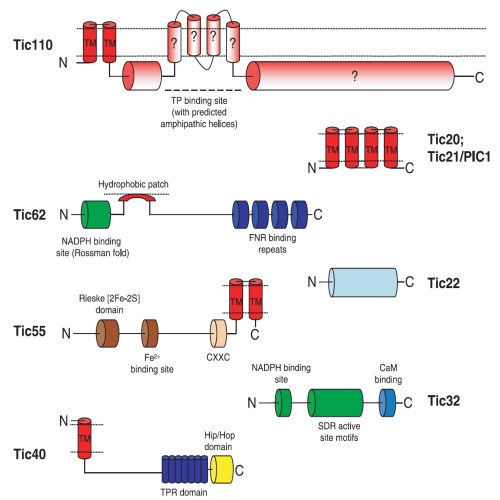Protein transport in organelles: The composition, function and regulation of the Tic complex in chloroplast protein import
31-Jan-2009
FEBS J., 2009, 276(5), 1166-1176, doi:10.1111/j.1742-4658.2009.06874.x published on 31.01.2009
FEBS Journal, online article
FEBS Journal, online article
It is widely accepted that chloroplasts derived from an endosymbiotic event in which an early eukaryotic cell engulfed an ancient cyanobacterial prokaryote. During subsequent evolution, this new organelle lost its autonomy by transferring most of its genetic information to the host cell nucleus and therefore became dependent on protein import from the cytoplasm. The so-called 'general import pathway' makes use of two multisubunit protein translocases located in the two envelope membranes: the Toc and Tic complexes (translocon at the outer/inner envelope membrane of chloroplasts). The main function of both complexes, which are thought to work in parallel, is to provide a protein-selective channel through the envelope membrane and to exert the necessary driving force for the translocation. To achieve high efficiency of protein import, additional regulatory subunits have been developed that sense, and quickly react to, signals giving information about the status and demand of the organelle. These include calcium-mediated signals, most likely through a potential plastidic calmodulin, as well as redox sensing (e.g. via the stromal NADP+/NADPH pool). In this minireview, we briefly summarize the present knowledge of how the Tic complex adapted to the tasks outlined above, focusing more on the recent advances in the field, which have brought substantial progress concerning the motor function as well as the regulatory potential of this protein translocation system.











